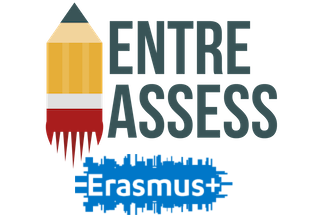 What it is: An electronic portfolio, also known as an ePortfolio or digital portfolio is a purposeful collection of student work that exhibits the student’s efforts, progress, and achievements in one or more areas. The collection often includes student participation in selecting content, the criteria for selection, the criteria for judging merit, and evidence of student self-reflection. Portfolio means both process and product, path and goal, tool and toolbox, method and principles. The term “E-Portfolio” appears both in educational and professional contexts and involves using online tools.
What it is: An electronic portfolio, also known as an ePortfolio or digital portfolio is a purposeful collection of student work that exhibits the student’s efforts, progress, and achievements in one or more areas. The collection often includes student participation in selecting content, the criteria for selection, the criteria for judging merit, and evidence of student self-reflection. Portfolio means both process and product, path and goal, tool and toolbox, method and principles. The term “E-Portfolio” appears both in educational and professional contexts and involves using online tools.
How it works: An ePortfolio is made by the student and is a cohesive, well-designed collection of electronic documents that demonstrate skills, education, professional development, and the benefits to a selected audience. Students are able to apply to college or businesses showing these complete examples of their work, which are often much richer than test scores and grades. An ePortfolio can be ‘open’ and ‘shared’ with other students, partners and whole professional communities. In the construction of the portfolio the student can take the initiative, and can demonstrate responsibility for himself and his peers. ePortfolios can be used to integrate non-formal and informal learning outcomes into the formal learning process and result in the student becoming more aware of his or her competences.
Benefits: Students can experience team work and practice cooperation and dialogue. In addition they learn how to effectively self-assess, document and present their achievements. The teacher has a good overview of how students learn and sees evidence of their efforts, progress and achievements. The school can assess students’ learning and progress more frequently and more accurately in a process of dialogue, where feedback is provided in the process of developing the portfolio. Overall, the teacher can see the students’ growing authenticity and can learn more about his/her personalities.
Challenges: ePortfolios may be mismanaged whenever the above principles are neglected for reasons of impatience, ignorance or simple misunderstanding. When used for examination purposes, ePortfolios can lead to a demand for and overemphasis on standardisation, in contradiction of the various aspects of the principal of choice (“Standardised Portfolio“). Portfolios can ask too much of students if all teachers want to employ portfolios for all purposes all the time.
Relevance for entrepreneurial teaching: In relation to entrepreneurial education, ePortfolios show experiences of young people as active participants in society, engaged in continuous learning, self-discovery and exploration of the world. It is an interesting tool because teachers can evaluate the level of development in entrepreneurial competences overall, particularly if they use rubrics. It can be useful in active learning methodologies where students become the protagonists of their own learning especially where the main goal is the development and acquisition of varied and relevant skills, a diverse range of competences and meaningful, positive learning dispositions.
Applied assessment methods: The ePortfolio is a good example of an e-assessment tool that allows reflective assessment, development of skills feedback and is useful when applied toperformance assessment models. Through this process of learning and development, the young person begins to acquire and develop capacities for reflective judgement, self-awareness, personal responsibility and self-directed ethical behaviour.
Examples from practice: There are several good practises in Basque Country VET Schools of using E-portfolios.


